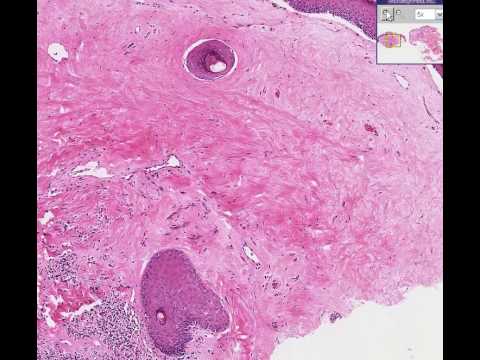Lichen sclerosus is a long-term skin condition that mainly affects the skin of the genitals. It usually causes itching and white patches to appear on the affected skin.
Other areas of the body are also occasionally affected, including the upper arms, back, breasts and shoulders.
Lichen sclerosus is most common in women who have been through the menopause, although men and children are also sometimes affected.
It’s not clear what causes lichen sclerosus, but it’s thought to be related to overactivity of the immune system. It’s not an infection and can’t be spread to your partner or other people.
Lichen sclerosus can be uncomfortable and distressing, but it’s usually possible in most cases to control the symptoms with simple treatments.
Symptoms in women and girls
In women and girls, lichen sclerosus tends to affect the vulva (the skin around the entrance to the vagina) and the skin around the anus (back passage).
Symptoms include:
small white areas that may increase in size and join together to form larger patches – these patches may become cracked and sore
itchiness, which tends to be worse at night and may disturb sleep
the skin becoming fragile and thin, or wrinkly and thickened
red or purple blood blisters
pain when having sex and/or passing stools
Without treatment, the vulva may gradually scar and shrink. This can make the entrance to the vagina narrower, which makes sex even more difficult and painful.
Symptoms in men and boys
In men and boys, lichen sclerosus tends to develop on the foreskin and end of the penis. The skin around the anus is rarely affected.
Symptoms can include:
sore or sometimes itchy white patches on the penis, particularly around the tip, but sometimes on the shaft
the skin at the tip of the penis becoming firm and white
difficulty pulling the foreskin back, which can make peeing difficult and lead to painful erections if left untreated
For both men and women, it’s often easy for a doctor to diagnose lichen sclerosus by asking about your symptoms and examining your skin. However, in some cases, a very simple procedure known as a biopsy, where a skin sample is taken for analysis, may be needed to help make the diagnosis.
How long does lichen sclerosus last?
For most people, lichen sclerosus is a long-term condition that lasts many years and may flare up and down over time.
There’s currently no cure, but symptoms can normally be controlled with steroid medication applied directly to the affected skin (see below).
Occasionally, lichen sclerosus goes away on its own and doesn’t come back, but this usually only occurs when children with the condition reach puberty.
Treatments for lichen sclerosus
Steroid creams and ointments
The main treatment for lichen sclerosus is steroid ointment or cream, which helps to control symptoms.
It should be applied regularly, but relatively sparingly, to the affected areas of skin. Your doctor will advise you on how much to use, how frequently, and for how long. Generally, a 30g tube should last around three months.
When used appropriately, the risk of side effects such as thinning of the skin is very low. Read more about the side effects of steroid creams.
Symptoms tend to ease after a few weeks of treatment, but it may be a few months before your symptoms are fully under control.
After three or four months of regular treatment, you might only need to use the cream once or twice a week, or sometimes even less, to stop symptoms returning.
Steroid creams and ointments are very effective in most cases. However, if they don’t help, other treatments may be suggested by a specialist.
Surgery
In a few cases, surgery may be needed to treat problems caused by lichen sclerosus.
For example, if the condition causes a woman’s vaginal opening to become very narrow, affecting sex, an operation to widen it may be suggested.
Men or boys may need surgery to remove the foreskin (circumcision) if steroid ointments or creams don’t help and the foreskin becomes severely affected. This can result in the condition settling fully.
Self-help for lichen sclerosus
In addition to the above treatments, the following measures can often help keep your symptoms under control:
avoid washing with soap or bubble bath – use plain water or an emollient wash instead, such as aqueous cream (but avoid leaving aqueous cream on the skin after washing)
avoid rubbing or scratching the area
gently dab your genitals dry after peeing, to stop your urine irritating the skin
apply a barrier cream or ointment, such as petroleum jelly, to affected areas after washing and before and after urinating
avoid wearing tight or restrictive clothes and wear underwear made from natural materials such as cotton or silk – women may find it helps to wear stockings rather than tights
For women who find sex painful, it may help to use a lubricant or a vaginal dilator.

